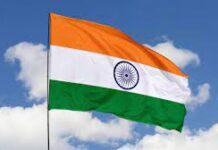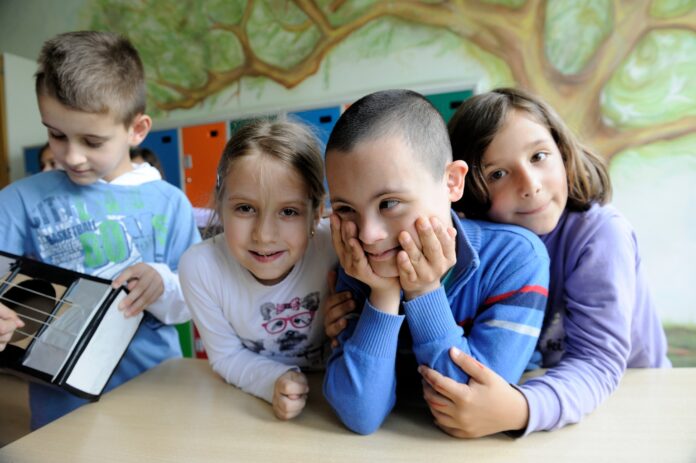When Sarfraz when went to school for admission, he was denied it. The reason of denial, was his inability to speak and hear like normal students. He was advised to get admission in a school of special children.
Anwar’s case is not different. He was denied admission because he had a foot with a peculiar structure, causing an abnormal walk. Likewise, though Parkash and Haresh, two brothers from Bagri community (scheduled caste Hindus mostly engaged in sweeping and sanitation work), were admitted, but it was only after huge effort of their father. These examples reflect that the existing framework of educational sector in the country Is not inclusive in any way.
The term inclusive education signifies the recognition of, and giving value to diversity in a school setting. According to UNESCO, inclusive education is seen as “a process of addressing and responding to the diversity of needs of all learners through increasing participation in learning,” The term not only refers to mainstreaming education of children with special needs, it applies to all children regardless of their ethnicity, gender, personality traits or parents’ socio-economic status. The goal is the equitable provision of learning opportunities irrespective of any kind of difference.
The state through different constitutional obligations takes upon itself the responsibility of promulgating inclusive education. One provision extending such obligation is Article 25A of the 1973 constitution. It stipulates that “The State shall provide free and compulsory education to all children of the age of five to sixteen years in such manner as may be determined by law.” Whereas Article 26 states ‘there shall be no discrimination against any citizen on the ground only of race, religion, caste, sex, residence or place of birth.’ This applies also to the educational sector. Constitutional obligations aside, Pakistan has also made international commitments for promotion of inclusive education. One such example is the UN Convention on the Rights of the Child (1991) which asks for protecting the rights of children through inclusion in mainstream schools.
It is a sad state of affairs that inclusiveness in our educational system is missing. There are considerable inequalities prevalent by disability, religion, region, gender and socio-economic status. Starting from children with disabilities, the existing structure of mainstream education system in Pakistan does not accommodate such children. Special schools are built for them in every province, including the capital, but these schools suffer from the issues of substandard education and budgetary constraints. The departments of special education in provinces neither have any interaction with the mainstream education departments of the government nor with private institutions. Accessibility of the children with special needs to such schools is very low, especially for those belonging to rural areas, as most of these schools are found in urban areas. The educational plans for Punjab (2013–17), Sindh (2014–18) and Balochistan (2013–18) put emphasis on inclusive education against special education as a future goal, but the efforts required for materialising this shift of policy are invisible.
The transpiration of inclusive education seems a distant dream in Pakistan. Non-inclusion of children with disabilities in mainstream education, prevalent faith-based intolerance in classrooms, and disparity in attainment of education by region and gender, all these realities are reflective of missing inclusive education here. However, materialising inclusive education is not something unattainable
The education system of the country is not fully inclusive when it comes to the minority students. The young learners belonging to minority groups do not get equitable treatment in classrooms. They often hear despicable faith-based comments from their teachers and peers. Such a treatment of minority students in schools is disclosed by a report titled ‘Education and Inequality’ launched by the Institute of Development Research and Corresponding Capabilities (IDRAC) and Human Rights Commission of Pakistan (HRCP) in July 2019. The report said that 60 percent of the non-Muslim students interviewed as part of this study said they had experienced discrimination in classrooms. This faith-based discrimination in educational institutions is contrary to the spirit of inclusiveness.
The educational sector of Pakistan is also not inclusive enough in terms of integrating children whose parents have disadvantaged economic backgrounds. The students belonging to well-to-do families manage to get admission in any desired school. While a good number of students belonging to impoverished families do not even dream of going to a public school. They do some kind of work to earn some livelihood for their family. This causes an upsurge in child labour. According to a report of the United Nations Children’s Fund (Unicef), about 3.3 million Pakistani children are entangled in child labour. Poverty does not allow such children to attend school.
The gender parity in attainment of education is still an unrealised dream. It is the responsibility of the state to ensure full participation of women in all spheres of national life, including education (Article 34). Talking especially about the educational sector, the participation of the fair sex is less. The Global Gender Gap Report (2021) of the World Economic Forum divulges this. The report placed Pakistan at 144th, out of 156 countries, in terms of educational attainment. According to the report, the enrollment gender gap in Pakistan’s overall education system stands at 13 percent. These gaps become widest at the lower educational levels– 84.1 percent in primary, 84.7 percent in secondary and 87.1 percent in tertiary levels. Further, only 46.5 percent of women are said to be literate, while 61.6 percent reportedly attain primary school education. In short, the education system is not inclusive by gender.
The children from remote or rural areas are also somewhat at a disadvantage as to earning dividends of so-called inclusive education. Most educational institutions are established in urban areas. The children belonging to rural areas have to come from far off to attend classes. Given the distance of schools, not all the parents get their children admitted to schools. The Constitution through its Articles 22(4) and 37 makes the description of backward areas and prescribes the state must ensure the uplifting of these. However, at the national or provincial level there are no laws or policies dealing with the inclusive education of children from rural or remote areas. The difficulty faced by children of rural areas in getting easy access to educational institutions, makes the inclusivity of the educational sector questionable.
The transpiration of inclusive education seems a distant dream in Pakistan. Non-inclusion of children with disabilities in mainstream education, prevalent faith-based intolerance in classrooms, and disparity in attainment of education by region and gender, all these realities are reflective of missing inclusive education here. However, materialising inclusive education is not something unattainable.
Those at the helm need to display strong willingness for transpiring inclusive education in its true sense so that the likes of Sarfaraz, Anwar, Parkash and Haresh could be integrated into mainstream education.























